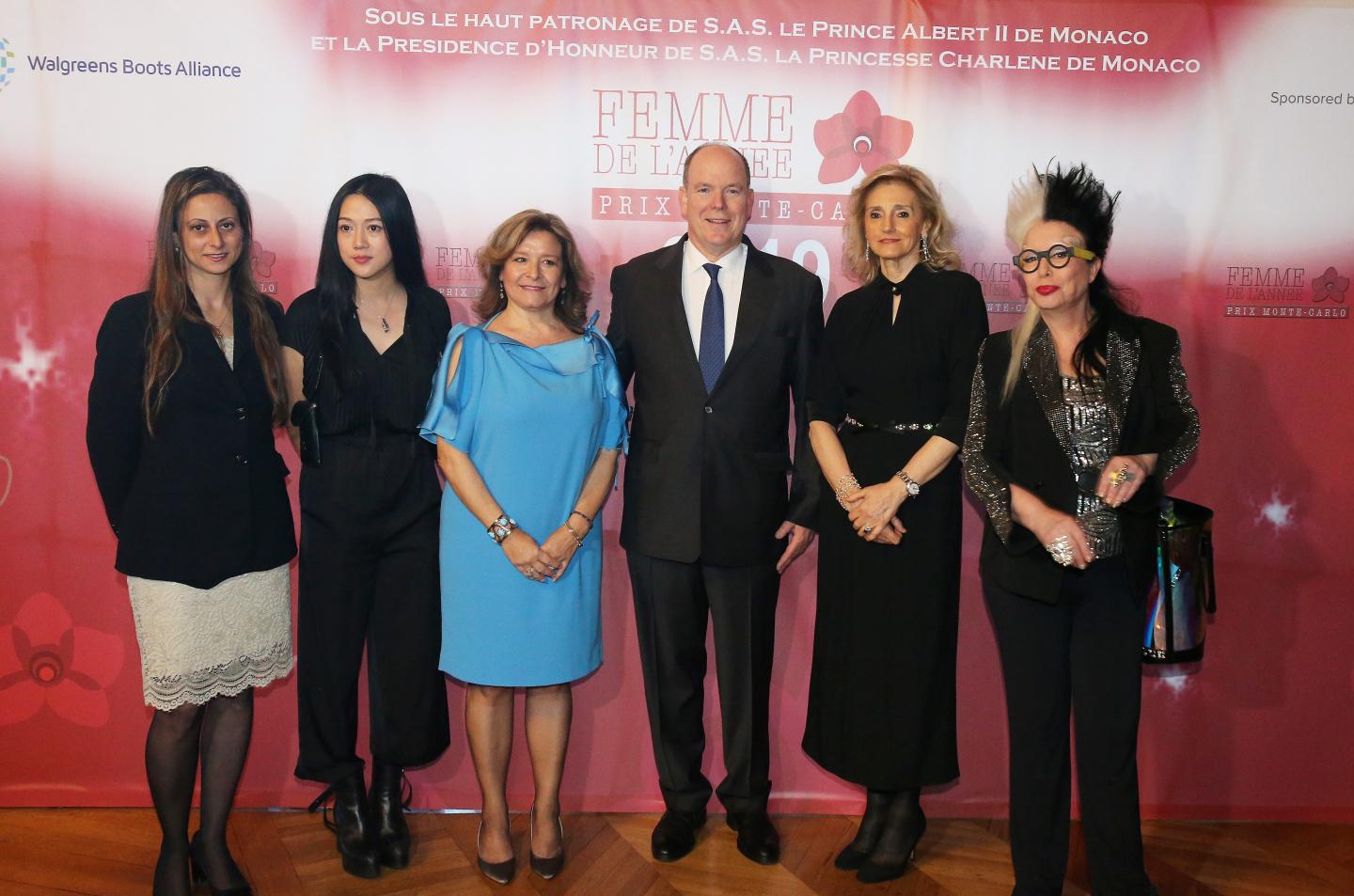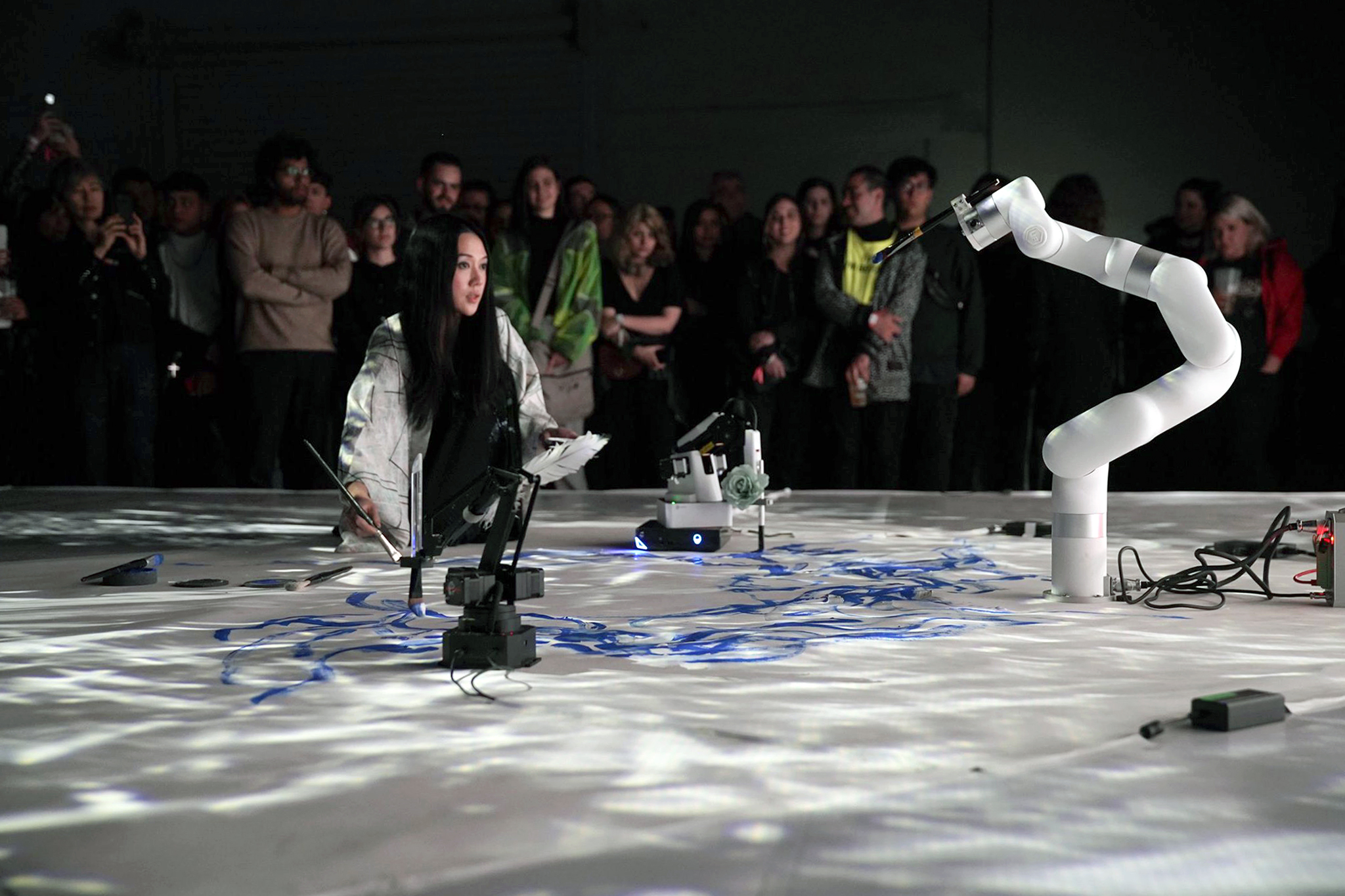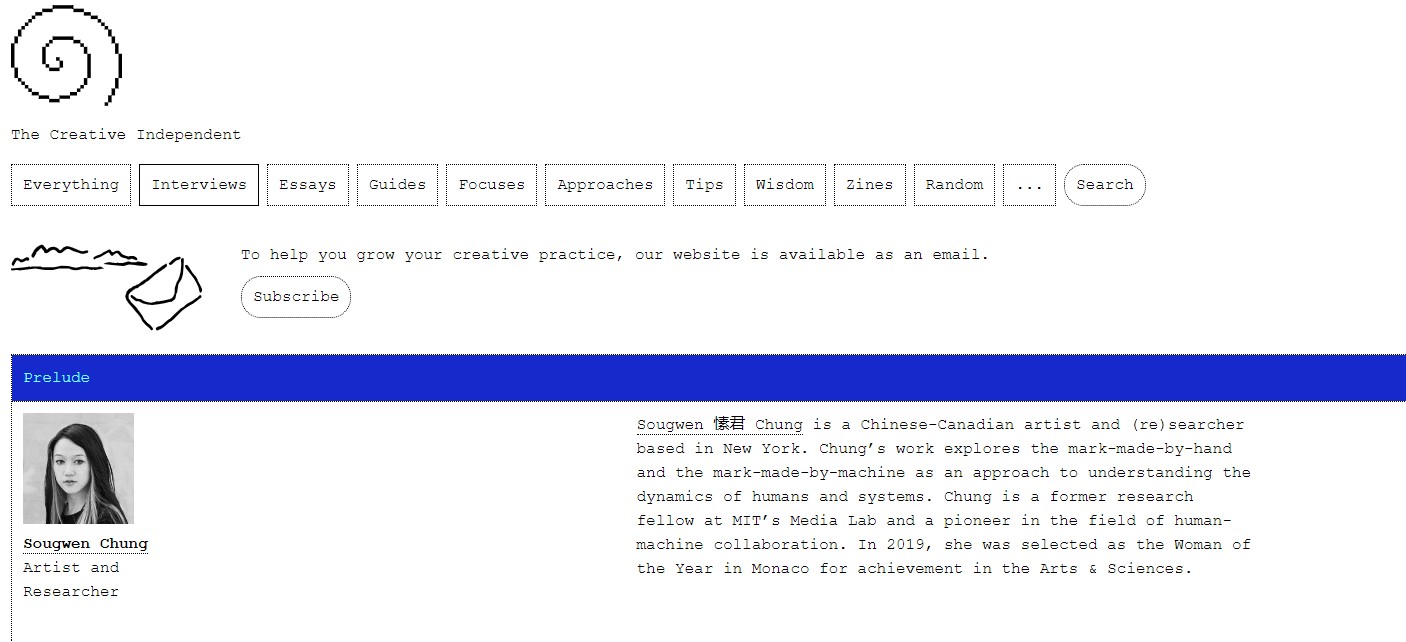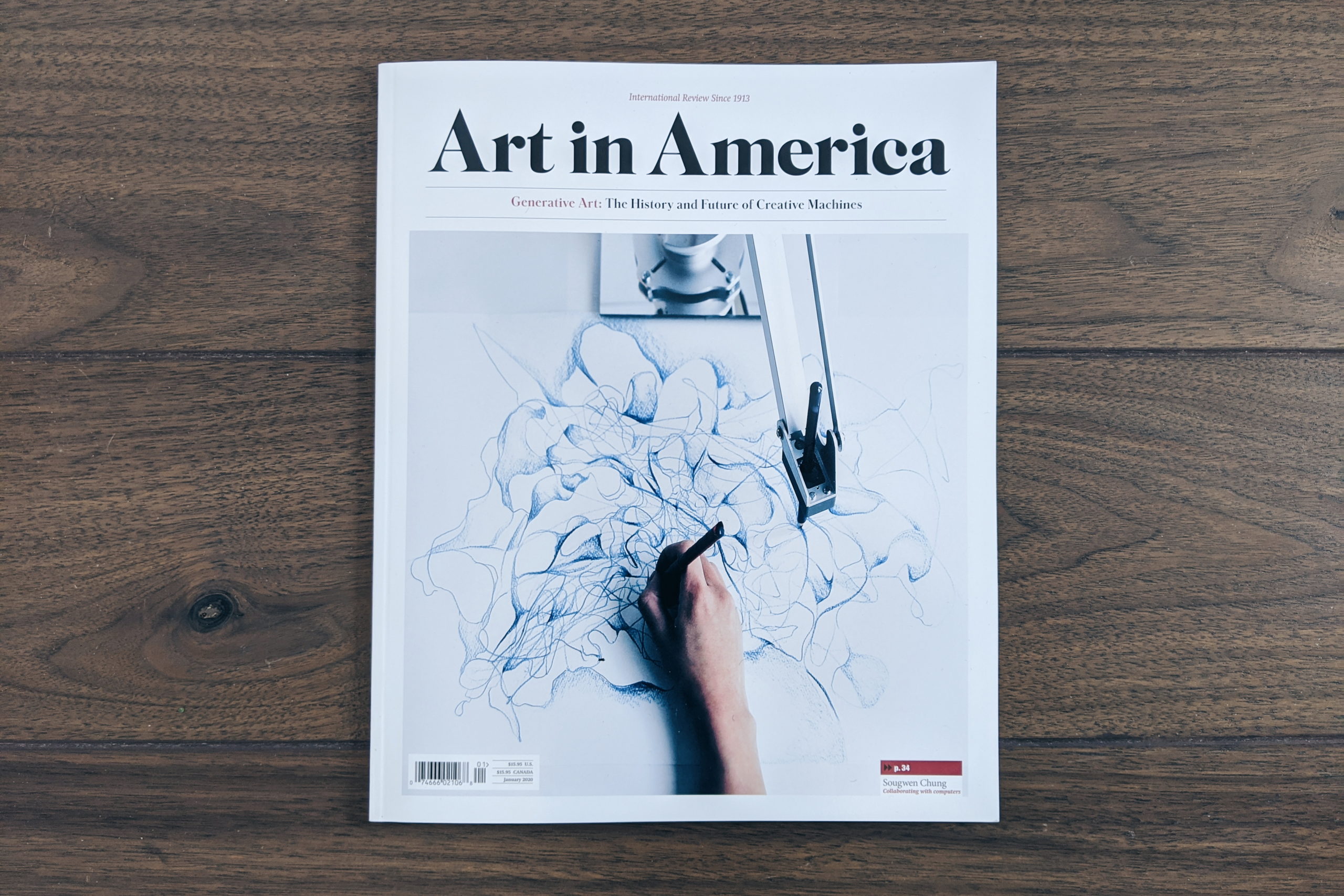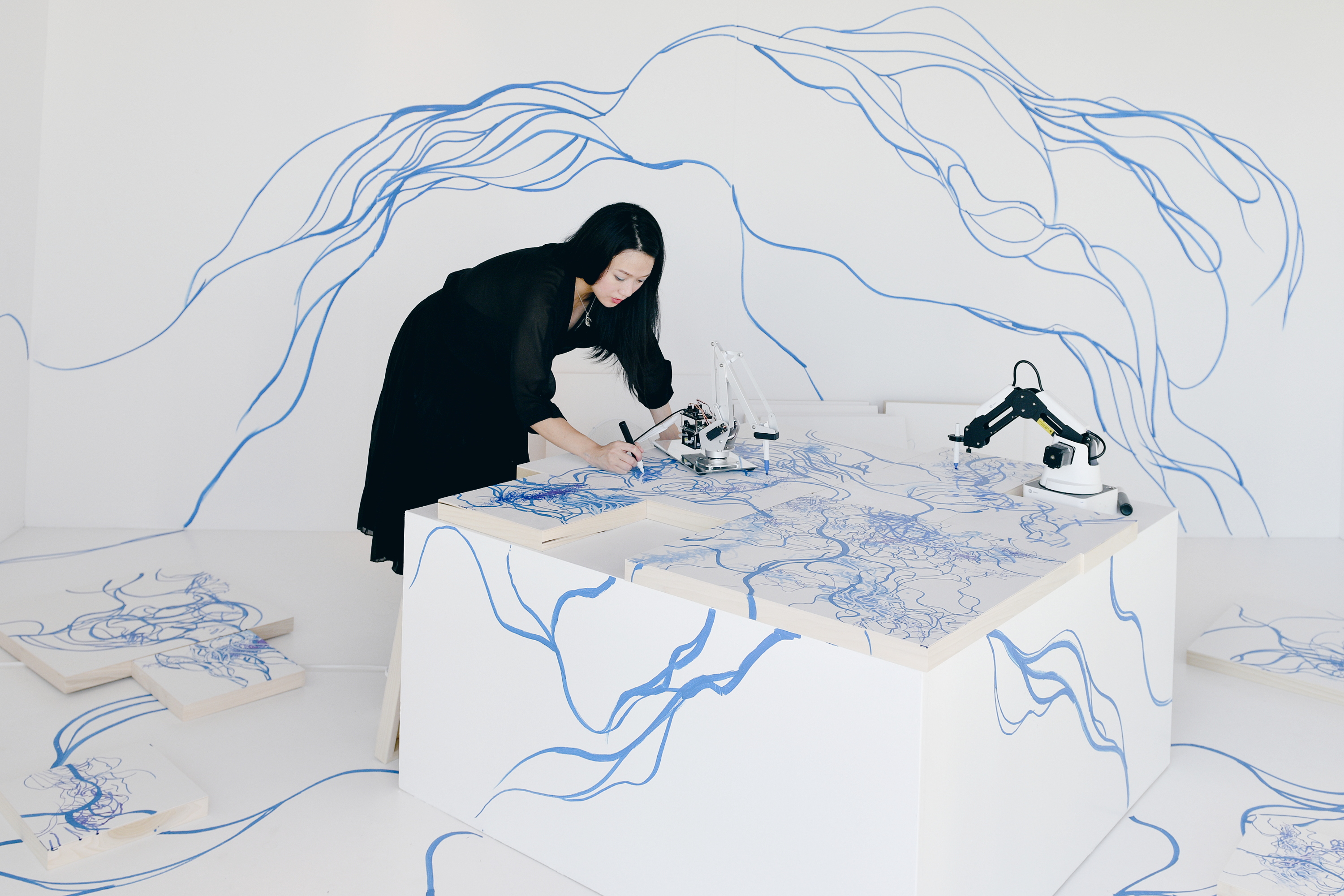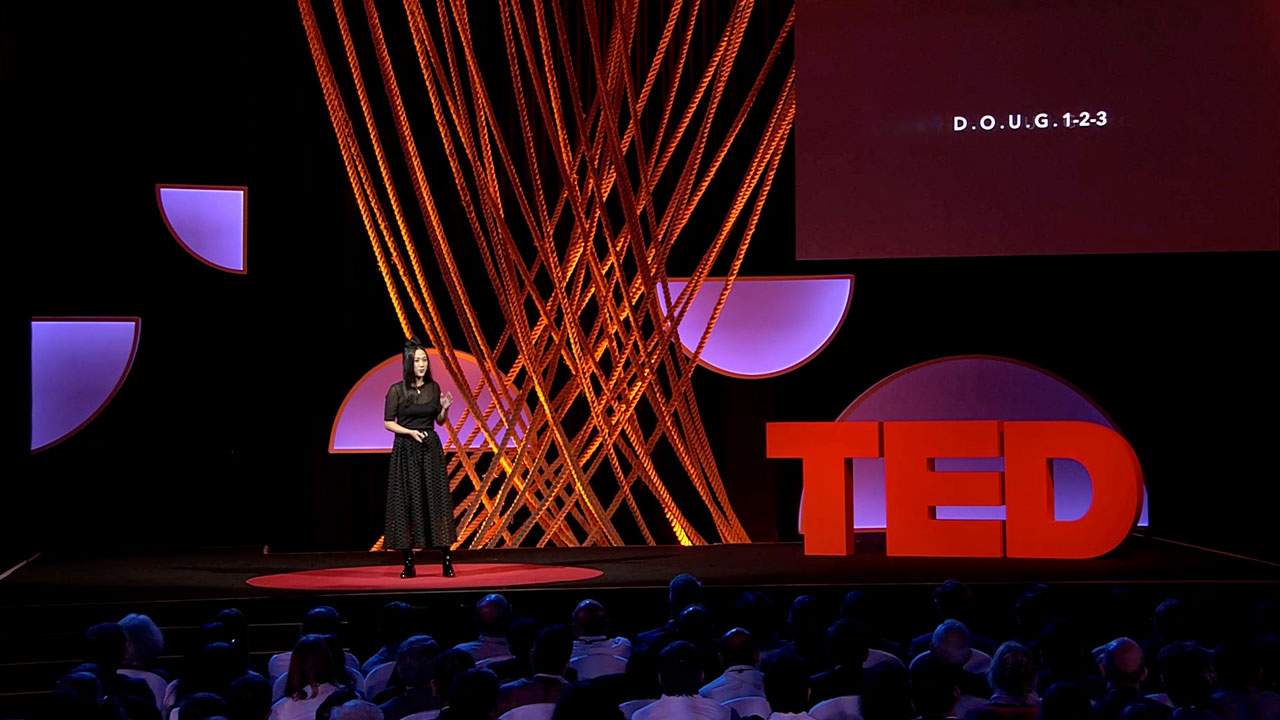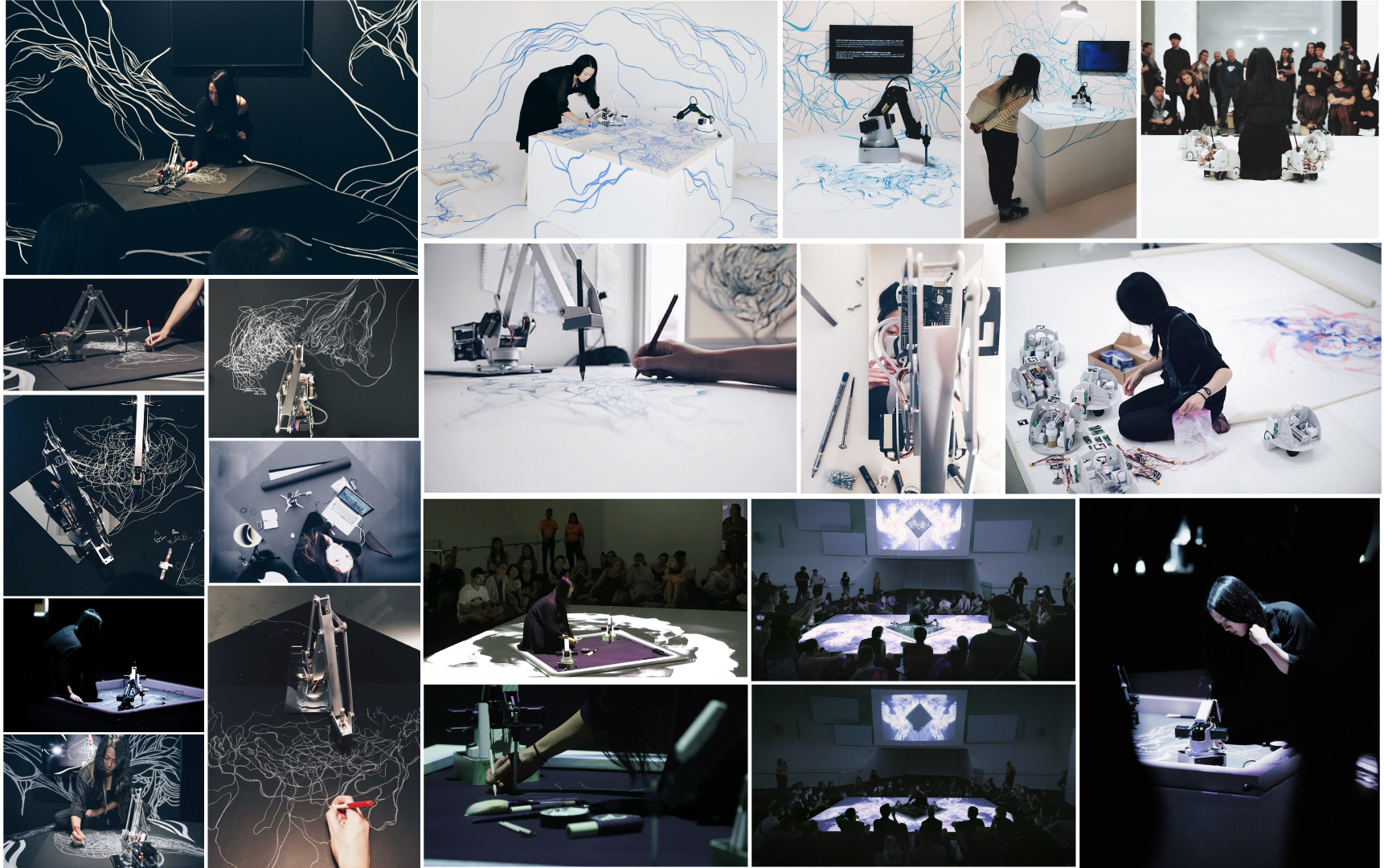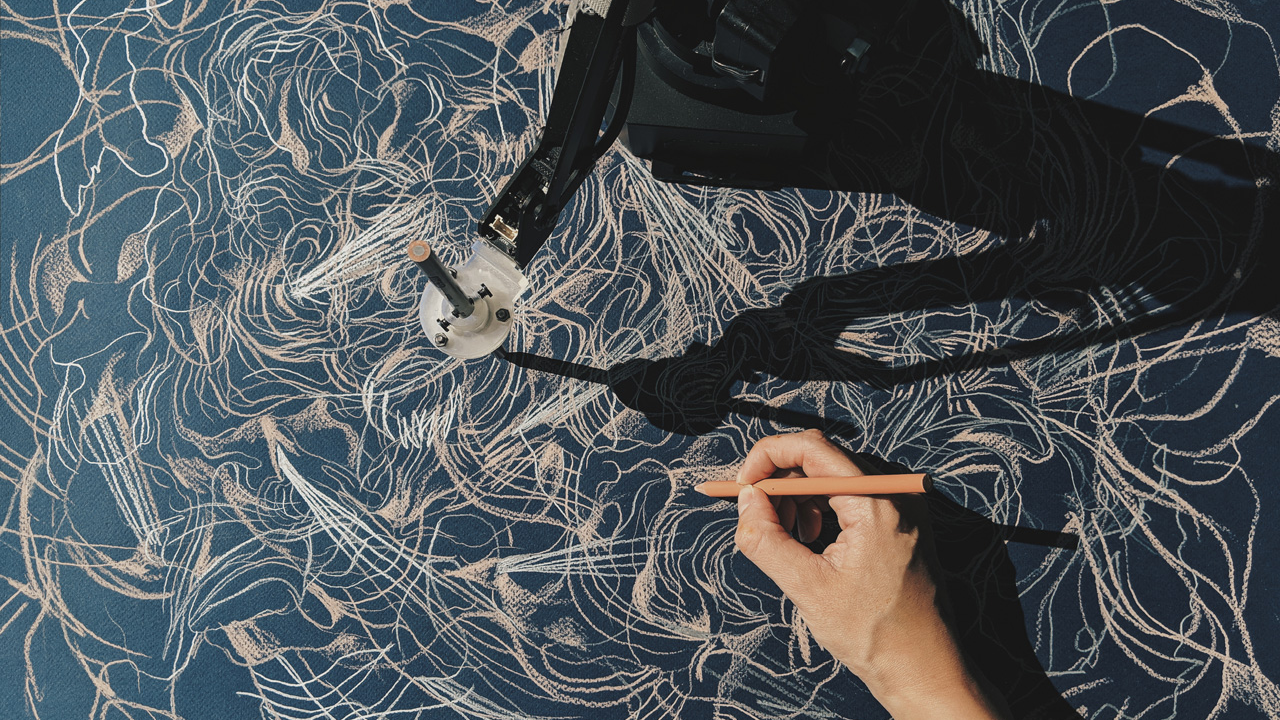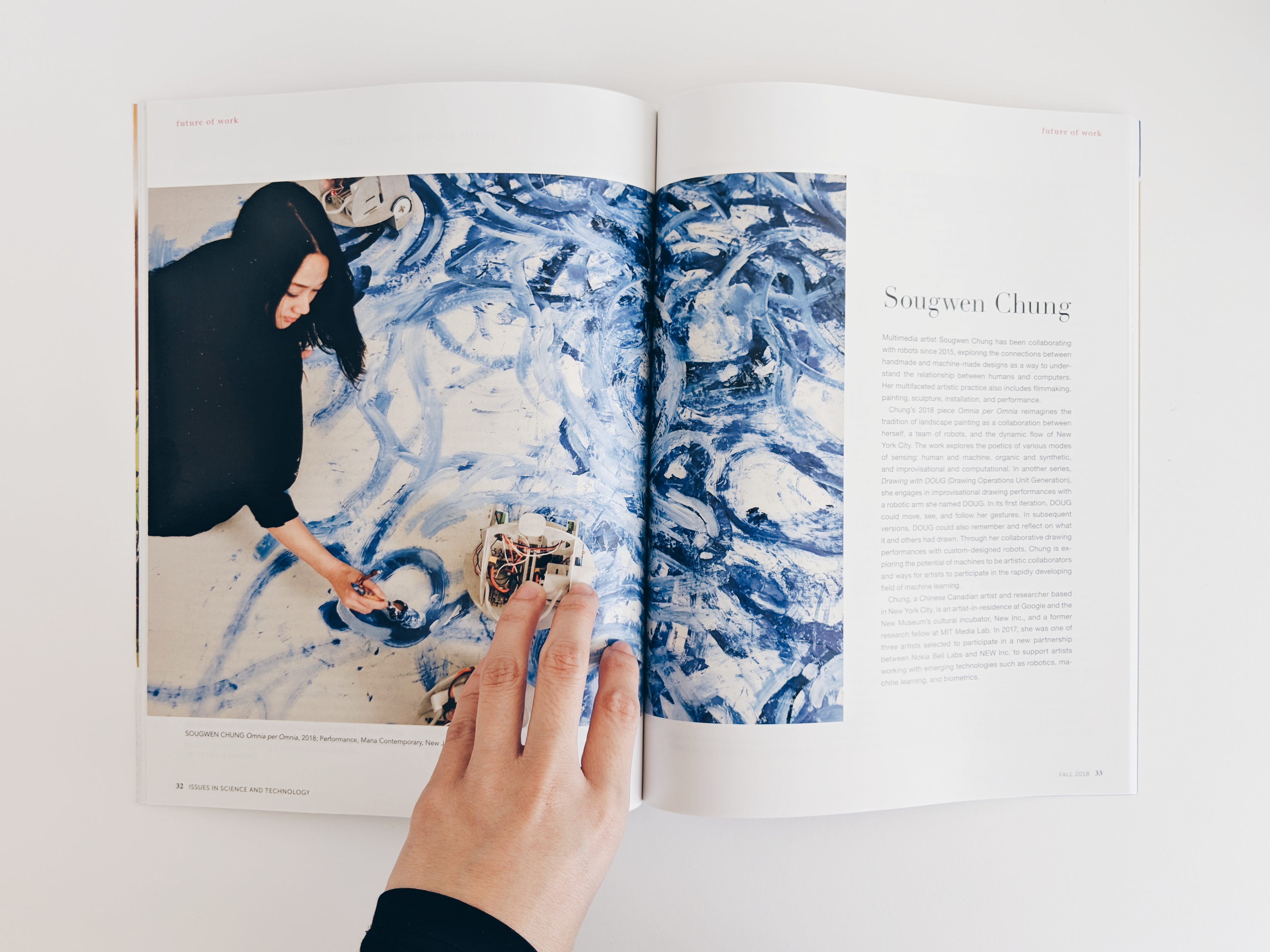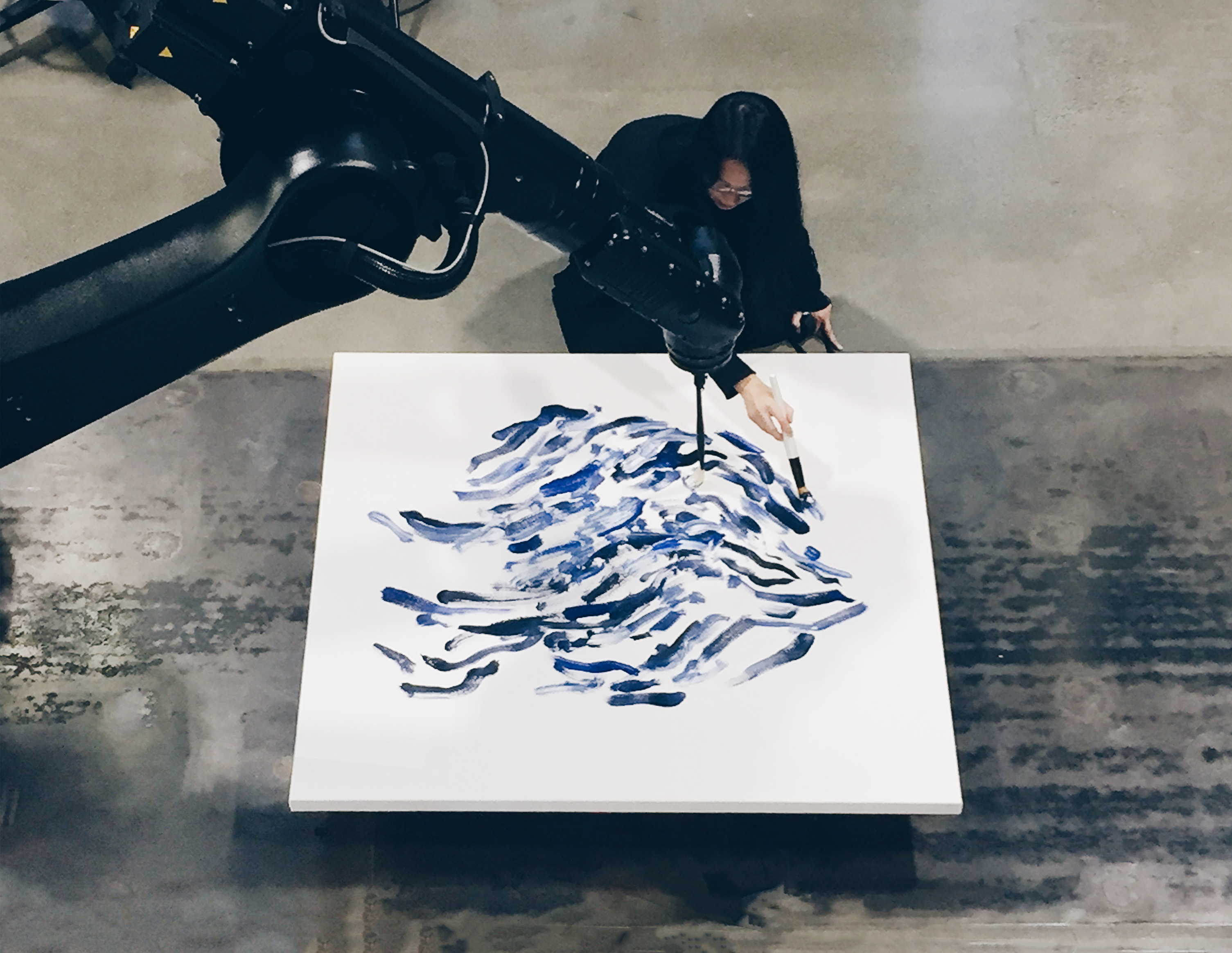Latest in: Press
Published Wednesday 8 May 2019 - 10:58 AM Harsh Biyani 150 guests gathered on Saturday night at the Oceanographic Museum to pay tribute to the work of three women who dedicate their lives between art …
Interview with Ken Tan featured on The Creative Independent Artist Sougwen Chung discusses the joys and complications of working with robotics, the evolving definition of what it means to be an interdisciplinary artist, and …
Artist Sougwen Chung discusses the joys and complications of working with robotics, the evolving definition of what it means to be an interdisciplinary artist, and creating space for other people to explore. Art, Inspiration, Process, Production, Independence From …
Thank you to Art In America magazine and Jason Bailey for featuring my drawing on their January issue, focusing on Generative Art. This represents a milestone in the industry of Art and Technology, and …
Sougwen Chung is an internationally renowned multi-disciplinary artist and researcher, whose work explores the dynamics of humans and systems. Chung is a former research fellow at MIT’s Media Lab and a pioneer in the field …
What happens when humans and robots make art together? In this awe-inspiring talk, artist Sougwen Chung shows how she "taught" her artistic style to a machine -- and shares the results of their collaboration …
Deeply grateful to @Lumen_prize, for awarding the Art and Technology Prize to Drawing Operations, a project I started in 2015 exploring human and machine collaboration. Thank you Carla Rapoport, and Jack Addis for your support and …
By Vanessa Chang LATE LAST YEAR, artificial intelligence made a loud splash in the art world. A trio of French students, calling themselves Obvious, put a smeared, unfinished portrait up for auction at Christie’s. Titled Portrait …
〰️ 🌊 daydreaming in blue 🌊〰️ My (re)search and art practice featured in Issues in Science in Technology: Future of Work Special Edition. In Omnia per Omnia, I paint with a multi-robotic system connected …
Thank you to @artnet for including me and Doug in their article on 9 Pioneering Artists working with AI. I spoke a bit with @Naomikrea about the potential I see in working with this new …
